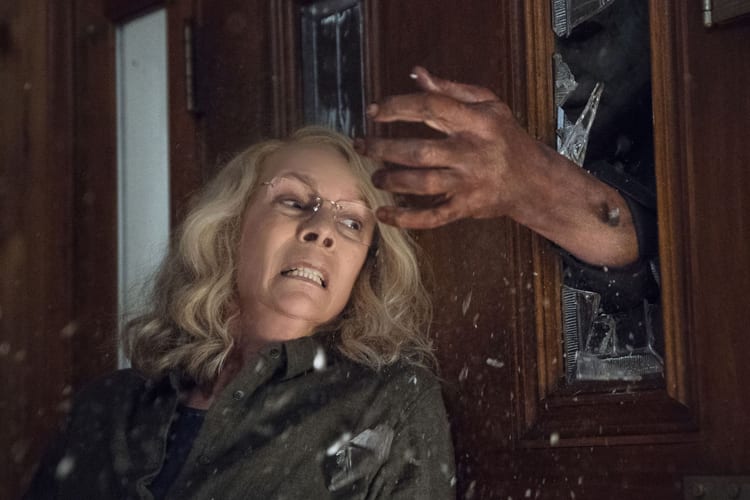The “Halloween” franchise has had a storied history, and much of it is ridiculous. John Carpenter’s 1978 original is credited, along with “The Texas Chain Saw Massacre”, with inventing the modern slasher film. Its simple score and pioneering use of long takes cemented it as a horror classic. The image of madman Michael Myers, poised with his kitchen knife raised, became ubiquitous—anyone could be Laurie Strode, the target of an invader killing at random.
Things got out of hand from there, though: the sequel went soap opera and revealed that Strode and Myers were long-lost siblings; in later movies, Paul Rudd faced down a death cult and Michael Myers resurrected from the dead via retcon. Finally, twenty-nine years after the original, “Halloween” was rebooted with a film of the same name—which was terrible, but it still got a sequel, which was also terrible. Now, forty years after the original, “Halloween” is receiving a direct sequel (again) and a second chance in the form of a film with the same name (again).
That’s all very complicated, so let’s simplify: 2018’s “Halloween” is a sequel to 1978’s “Halloween”, and it pretends that all the movies in between never happened. Screenwriters David Gordon Green, Danny McBride, and Jeff Fradley make it clear that they want to cut out the franchise’s mythological fat. In an early scene, Laurie Strode’s granddaughter Allyson hears the rumor that Michael Myers and Laurie are siblings, and she dismisses it as a silly fantasy. After four decades, “Halloween” is about a masked man killing at random again.
The slasher is sharpest when it’s casting off the shackles of its past. The franchise took a variety of avenues to complicate its central killer: some movies fleshed out his backstory, others dissected him psychologically, and one even gave him a supernatural curse. 2018’s “Halloween” features multiple characters that try to approach Michael from such perspectives—and he slices through them without missing a beat. The movie uses its violence as a winking purification of the series’ past mistakes, hearkening back to a time when slashers were just good ol’ fashioned murderin’.
It’s simple by design, but that simplicity keeps it from becoming anything special. The movie’s retro feel, highlighted by both its screenplay and its direction, is enjoyable enough. But David Gordon Green’s direction doesn’t do much in the way of scares. 1978’s “Halloween” horrified audiences—look no further than recently restored audio from an audience in 1979, which captured viewers screaming in abject terror upon seeing Michael Myers sit up in the background. Over the years, however, horror innovations became horror conventions, and the original “Halloween” lost its frightening luster. 2018’s “Halloween” is about as scary as the original is now. Green successfully generates tension in only a few scenes: the rest rely solely on the thrill of the kill.
In the absence of scares, the movie turns to comedy and a compelling protagonist. “Halloween” is interspersed with funny dialogue. It’s good for a few laughs here and there, but it never commits to the jokey tone enough to register as an out-and-out funny movie. Jamie Lee Curtis’ return as Laurie Strode is more worthwhile: Laurie spent four decades preparing for Michael’s return, and this time around, she’s a hardened survivalist with PTSD and a grudge. When the script is flipped and it’s hunter vs. hunter, “Halloween” is full of triumphant women and fist-pumping moments.
Otherwise, it’s slasher business as usual, which is still a welcome return to form after years of missteps. “Halloween” 2018 won’t cement itself in the annals of horror history—one could argue that it barely qualifies as horror movie—but it’s a fun throwback with plenty of opportunities to hear that famous “Halloween” theme, and a bloody good holiday treat.
★★★½ (3.5/5)




